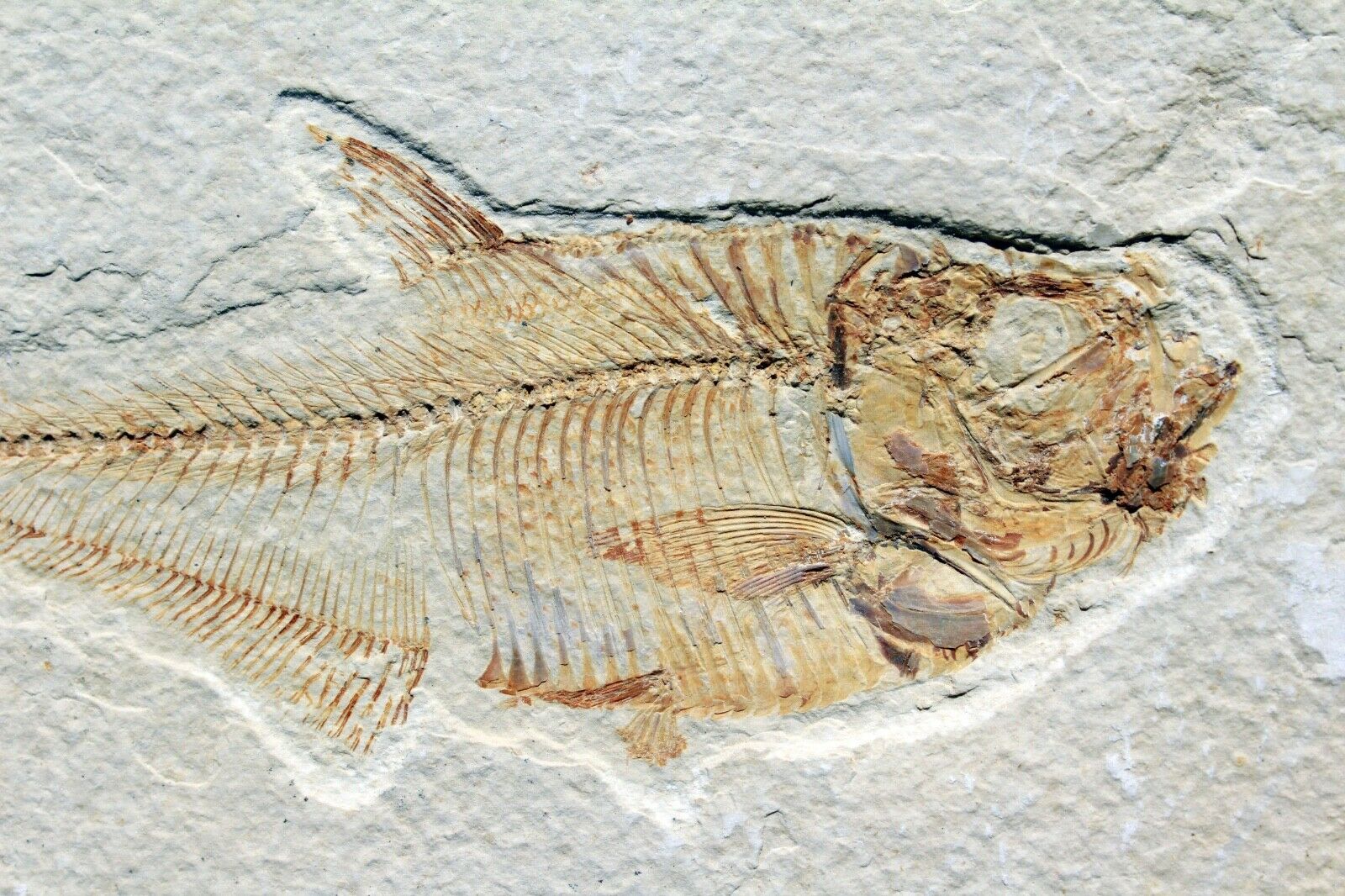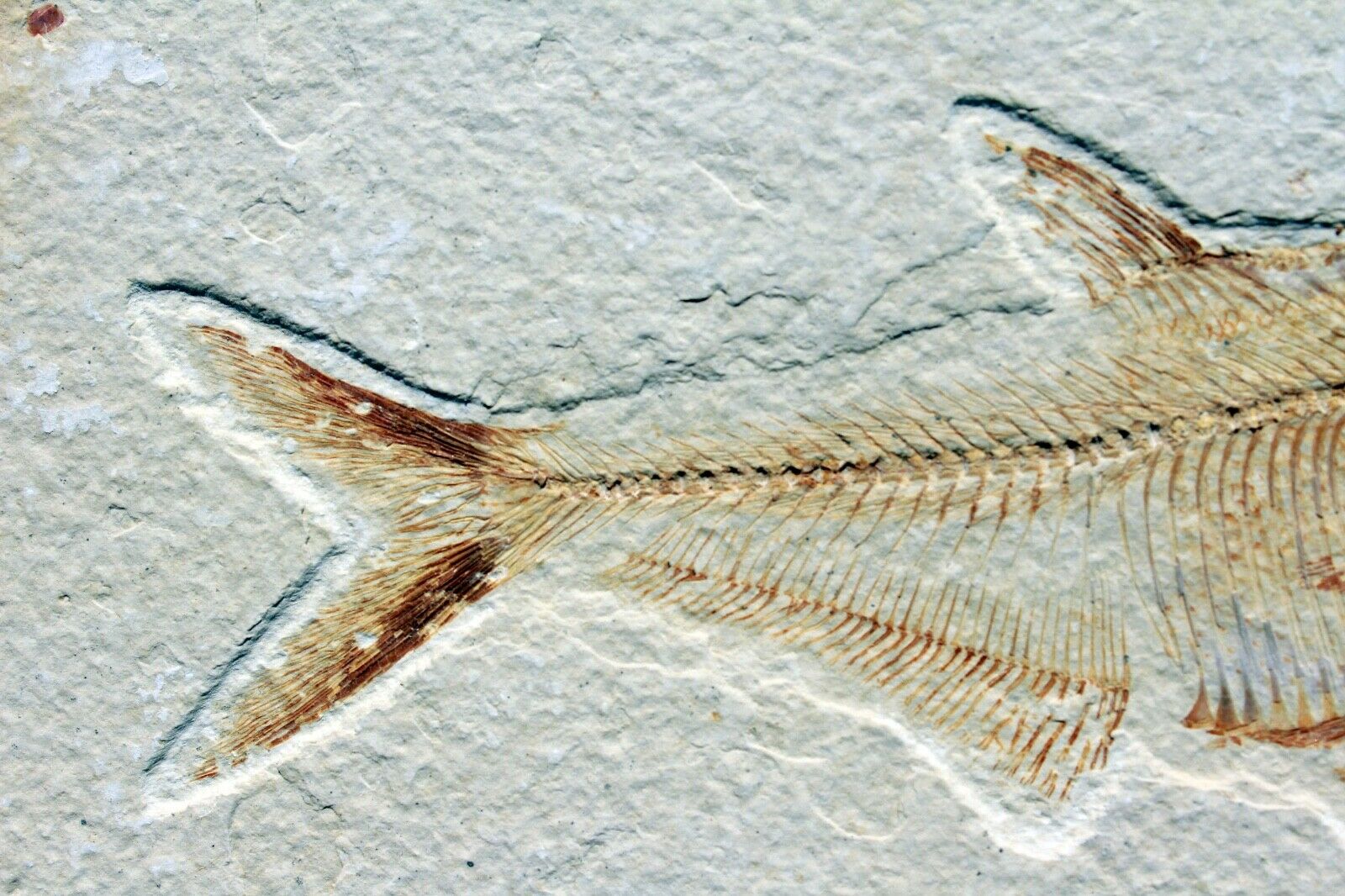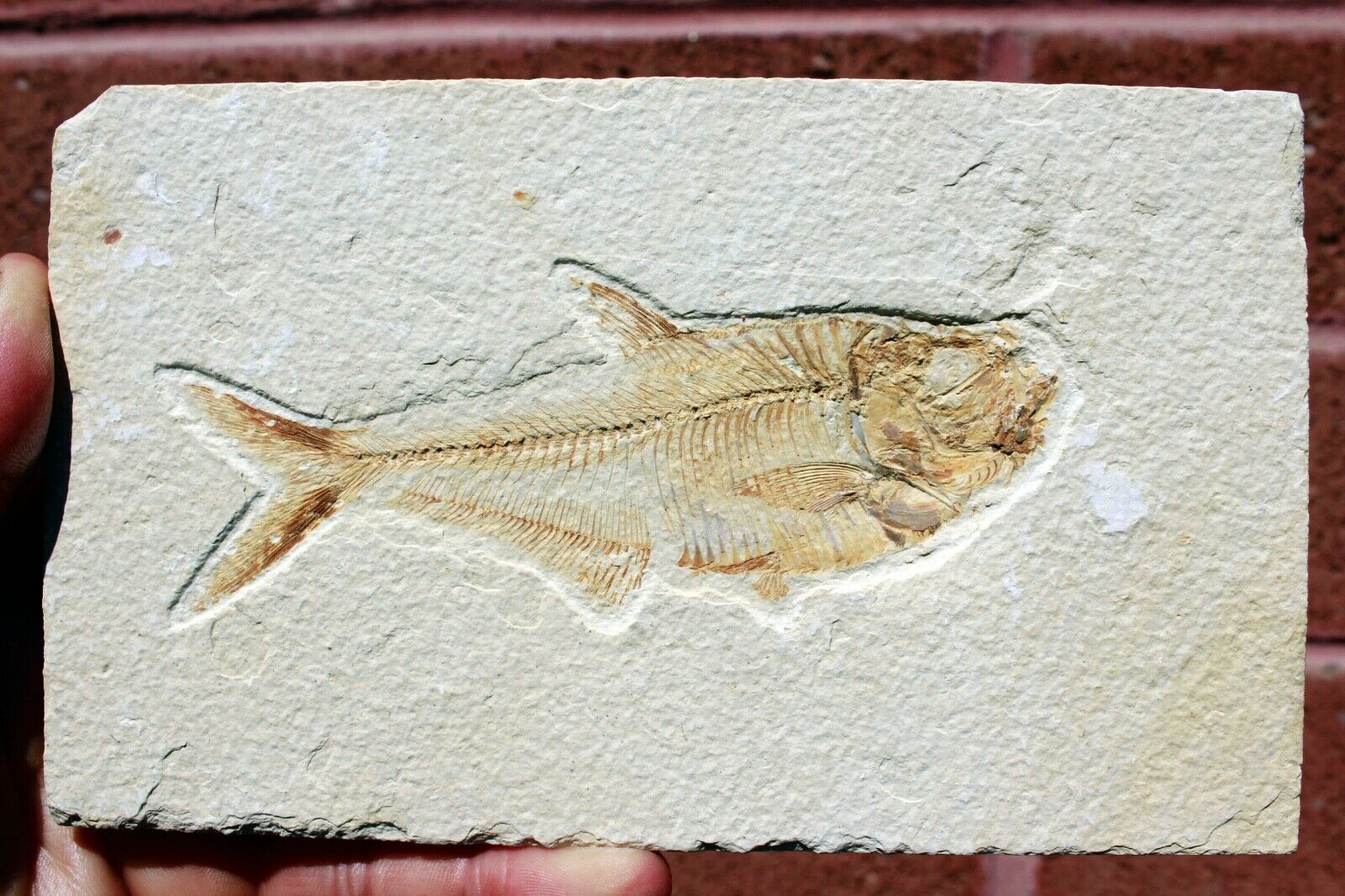-40%
Diplomystus dentatus • 5.5" Fossil Fish
$ 30.09
- Description
- Size Guide
Description
Diplomystus dentatus from Wyoming50 Million Year Old Fossil Fish
•
Green River Formation
Diplomystus:
Diplomystus is an extinct group of freshwater fish distantly related to modern-day herrings, alewives, and sardines. The genus was first named and described by the famous paleontologist Edward Drinker Cope in 1877. There are seven known species This species, Diplomystus dentatus is very common in the layers of Wyoming's Green River Formation and are usually found hanging out with an extinct group of herring of the genus Knightia.
Green River Formation:
The Green River Formation consists of three very large fossil lakes located in Utah, Colorado and Wyoming. The smallest of the three lakes is in Wyoming but is by far and away the most productive. There have been hundreds of different kinds of insects and plants, huge alligators, birds, snakes, and even a couple of small horses recovered from the layers of this formation over the last 100+ years. In addition, the layers are most famous for the hundreds of thousands of fish fossils that have been found that total 14 different varieties of fish. A quick trip to Fossil Butte National Monument will serve as an excellent introduction to the history and paleontology of the area.
How Do I Know This is an Authentic Fossil Fish?
There are several clues that lead us to the conclusion that these are bona fide fossil fish:
1. Appearance:
We hate to state the obvious but take a good look. It looks like a squished fish. No real imagination required. The other bigger clue is that this type of fish is not found alive today. Diplomystus is an extinct genus of freshwater clupeomorph fish distantly related to modern-day extant herrings, alewives, and sardines.
2. Collecting Location
: These specimens were collected in the Green River Formation of southwestern Wyoming. It is a rock layer that is famous for being full of fossil fish and other aquatic inhabitants.
3. Host Rock:
The rocks in the Green River Formation, where the fish are found, are sedimentary rocks. Sedimentary rocks are prime collecting locations for fossils. This rock is limestone that accumulated on the bottom of a shallow lake.
4. Associated Fossil
s: Again, not to beat a dead horse but, the fish are found in the same area where you can also find aquatic plants, insects common to wetland areas, vertebrates like birds and alligators that live in or near watery areas. It is not a huge stretch to suggest that where there were fish living and eating and pooping for millions and millions of years that some of those fish might have died, been buried and mineralized.













